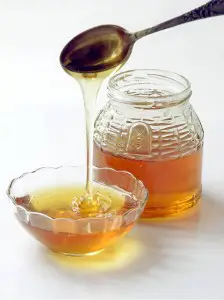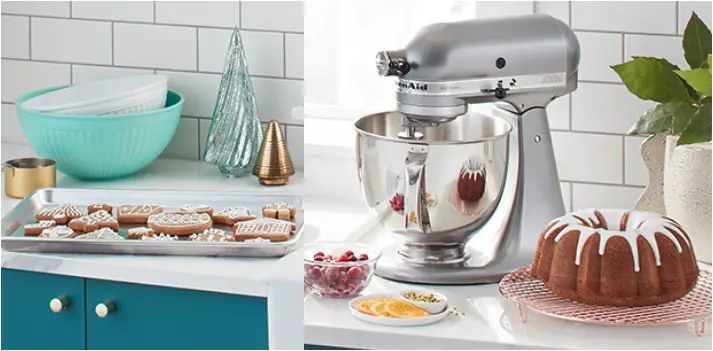How to Substitute Honey for Sugar
The flavor, color, and aroma of honey will vary depending on the type of flowers the bees used when gathering nectar. This nectar is then used in making honey. The fructose provides the sweet flavor in honey, while the nectar adds its characteristic taste. A popular variety is orange blossom honey. This, of course, gets its name from the orange blossoms the bees use in gathering their nectar. Each flower will provide a fruity or floral essence to the resulting honey. These little nuances are then transferred to the recipe and finished product in which the honey is used.
Generally, the lighter the color of the honey, the milder its flavor will be. If you want a stronger flavor for a particular recipe, use a darker or stronger flavored honey. However, if you want a milder or more delicate flavor, use a lighter colored or milder flavored honey.
Adjustments for Your Recipes – Substitute Honey for Sugar
When it comes to using honey in place of sugar in your recipes, the substitutions and adjustments necessary will depend on the recipe, and what you are making. In some recipes, you can simply use 1 c. of honey for each cup of cane sugar; however, this is a matter of personal taste. Some people prefer to use a little less honey and lean more towards a ratio of 1/2 to 3/4 cup honey for each cup of sugar they are replacing.
If you are substituting honey for more than one cup of white sugar, you will probably want to reduce the amount of honey to a ratio closer to 2/3 to 3/4 cup of honey per cup of sugar; otherwise, your finished product may be too sweet. Additionally, because honey adds more liquid to a recipe, you will also need to reduce the amount of some other liquid by ¼ c. for every 1 c. of honey that is used.
When making baked goods you will need to add 1/8 to 1/4 teaspoon of baking soda for every 1 cup of honey you use. This will help balance the natural acidity of the honey. You should also lower the temperature stated in your recipe by 25º F in order to prevent over-browning.
Things you will want to keep in mind when making substitutions:
- Honey adds additional moisture that is not present in regular sugar.
- Honey weighs more per cup and is more dense, which can make baked goods heavier.
- Honey brings its own unique flavor to a finished product.
- Honey brings acidity to a recipe.
- Honey causes baked goods to brown more quickly.
Moisture: If you substitute honey for sugar in most baked goods, the finished product will usually end up soggy and sticky. However, by looking at the other ingredients in a recipe, we can evaluate which ingredients will help absorb some of the extra moisture from the honey and simply increase those ingredients to help compensate. Or, we can go the other way and look at which ingredients bring moisture to the recipe and reduce some of those liquids.
Density: 1 cup of honey weighs 12 ounces, 1 cup of granulated sugar weighs 8 ounces, and 1 cup of brown sugar weighs 6 ounces. So, if you substitute equal parts of honey for brown sugar, you are essentially adding twice as much food; but, that’s not all. Because honey is sweeter than brown sugar, you are also adding more sweetness to the final product. However, maple syrup weighs 11 ounces per cup and honey is only slightly sweeter, so you could substitute approximately 10% less honey than syrup.
Flavor: Honey adds its own flavor to a recipe. It generally has a light and pleasant flavor, but it can interfere with the desired taste in a recipe. There really isn’t anything you can do about it except choose a honey that you find acceptable.
Acidity: Honey adds acidity to a recipe. If you are working with a recipe that is sensitive to this additional acid, you can neutralize it by adding a little baking soda. Adding 1/8 to 1/4 teaspoon of baking soda for every cup of honey is usually necessary in baked goods. It will also help to give them a little more rise.
Faster Browning: To prevent baked goods from over-browning, lower the oven temperature by about 25° F and watch carefully. When you substitute honey for sugar in baked goods, they tend to brown faster.
General Recommendations:
These recommendations are only a suggestion. The type and properties of any other ingredients in a recipe will play a role in how different sweeteners affect the final product. In order to get the type of results you are looking for, you may need to experiment a little when you substitute honey for sugar; however, these ratios should work well and still provide delicious results!
Baked Goods
Use 3/4 cup of honey in place of 1 cup of cane sugar. Reduce other liquids in the recipe by 1/4 cup for every 1 cup of honey used. Lower the oven temperature by 25° F, and watch the time carefully to avoid over-browning.
Other Cooking:
Substitute 7/8 cup of honey for every 1 cup of granulated sugar; there is usually no need to adjust other liquids in the recipe.

Substituting Honey for Other Types of Sweeteners
Molasses: You can use equal parts honey for molasses; however the resulting color and flavor will be a little lighter. The reverse is also true if you choose to substitute molasses for honey.
Corn Syrup: When substituting honey for corn syrup you can use the exact same amount; however, you will need to reduce other sweetening ingredients in the recipe because honey is much sweeter than corn syrup.
Dark Brown Sugar or Brown Sugar: Follow the recommendations for substituting honey for regular cane sugar, except substitute some molasses for part of the honey in order to retain this unique flavor. (Brown sugar is simply regular white sugar where some of the molasses has been left in during the refining process). However, brown sugar also attracts more moisture, so it helps keep baked goods from drying out too quickly. Also, the molasses that remains in the brown sugar adds additional moisture as well as a unique taste.
Raw Sugar or soft brown sugar: Raw sugar is basically very much like dark brown sugar except that it has smaller crystals. It also has more of the molasses retained during the refining process. You can follow the guidelines given above for substituting honey for brown sugar. If you want to substitute raw sugar in place of brown sugar or regular cane sugar, use approximately 20% more of the raw sugar.
Treacle: This is the generic name the British have for molasses or any other syrup that is made during the process of refining cane sugar. Other common names used are Black Treacle, Golden Syrup, Molasses, and Blackstrap. When substituting honey for treacle use the same guidelines given above for molasses.





I’ve been absent for some time, but now I remember why I used to love this site. Thank you, I will try and check back more frequently.
Thanks Barbara. Many of our recipes have now been converted to a printer-friendly version. We will continue to update recipes in order to make our site more useful for our visitors. We appreciate your feedback.